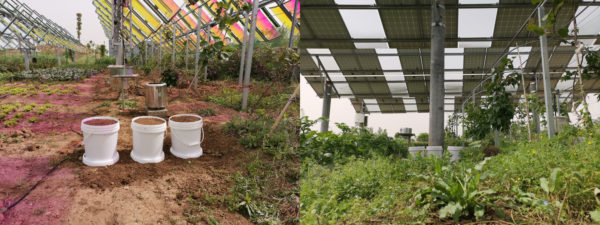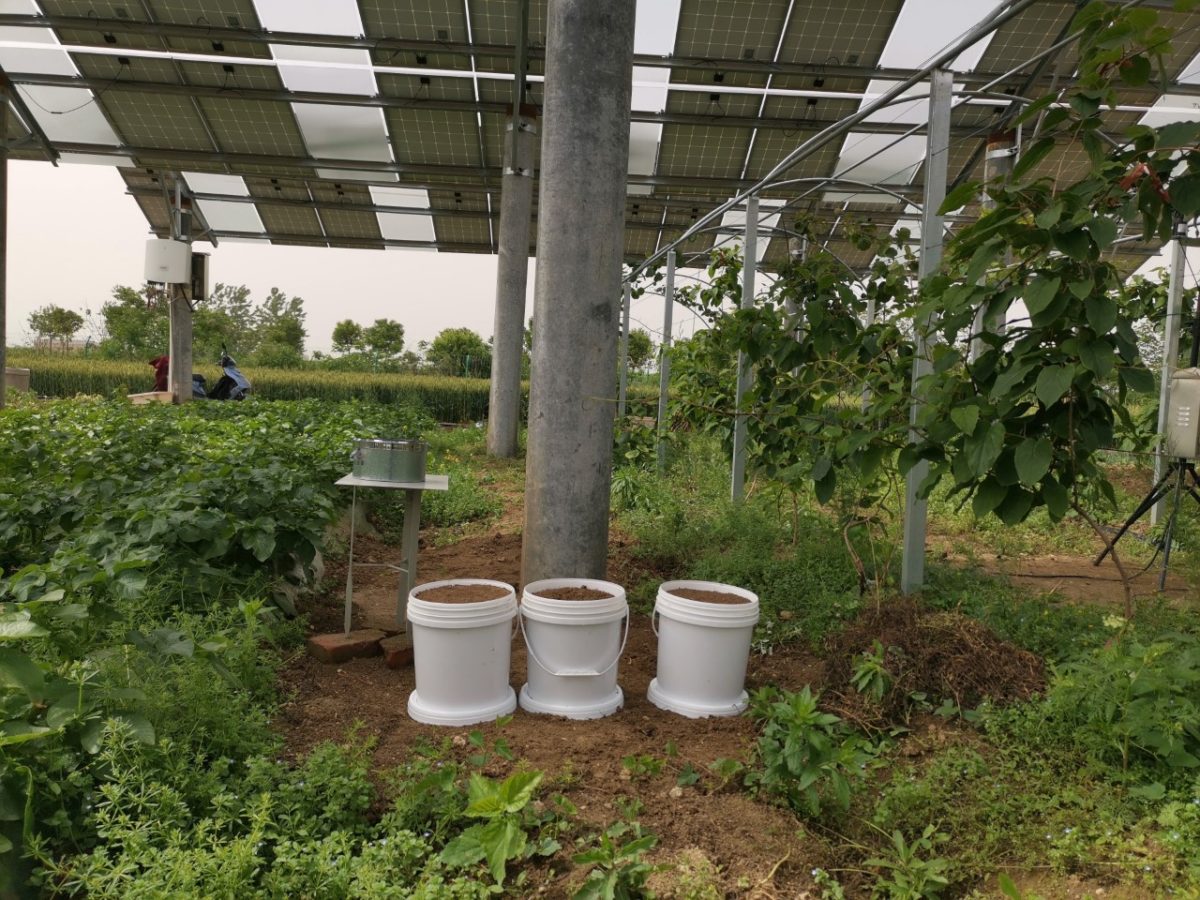Researchers from the University of Science and Technology of China have looked at how agrivoltaic installations could help to reduce evaporation rates on water surfaces.
“We investigated, in particular, the relationship between cumulative surface evaporation and evaporation time using simple linear regression and SPSS Statistics, a statistical software suite developed by IBM for data management,” researcher Wen Liu told pv magazine.
The scientists placed evaporation containers and pans under two different kinds of arrays deployed on air-dried loamy soil in Fuyang, in China's Anhui province. The region has a warm, temperate, semi-humid monsoon climate.
The first array was a classic agrivoltaic system based on crystalline silicon solar panels. The scientists referred to it as the “Even-lighting Agrivoltaic System” (EAS). It features grooved glass plates between two conventional PV panels to facilitate the even transmission of sunlight with uniform illumination, in order to provide enough light intensity for plant photosynthesis.
The second array was a system based on bent glass panels covered by low-cost multilayer interference films to enable sunlight separation, which they referred to as a “Concentrated-lighting Agrivoltaic System” (CAS). It uses spectral separation, which selectively transmits red, blue, and far-red light from sunlight to plants for photosynthesis. The rest of the sunlight is then concentrated and reflected onto PV panels for electricity generation.
“Whether CAS or EAS, the soil and water surfaces under the systems are exposed indirectly by the sunlight,” said the researchers. “The soil moisture content is higher than any soil surface exposed directly by the sunlight.”
The academics said that their findings provided “strong evidence” of reduced water evaporation at both facilities.
“The cumulative soil surface evaporation during the experiment period in the bare soil, under the CAS, and the EAS were 80.53 mm, 63.38 mm, and 54.14 mm; thus, CAS and EAS significantly reduced water evaporation at 21 % and 33 % of the soil surface evaporation,” they said. “The cumulative evaporation of the pan surface during the experiment period in the bare soil, under the CAS, and the EAS were 278.76 mm, 238.52 mm, and 225.85 mm; thus, the CAS and EAS significantly reduced water evaporation at 14 % and 19 % of the pan surface evaporation.”
They presented their results in “Water evaporation reduction by the agrivoltaic systems development,” which was recently published in Solar Energy.
“The correlation coefficient in all treatments was more than 0.91, suggesting a robust linear relationship,” the scientists concluded.

Image: University of Science and Technology of China
This content is protected by copyright and may not be reused. If you want to cooperate with us and would like to reuse some of our content, please contact: editors@pv-magazine.com.




6 comments
By submitting this form you agree to pv magazine using your data for the purposes of publishing your comment.
Your personal data will only be disclosed or otherwise transmitted to third parties for the purposes of spam filtering or if this is necessary for technical maintenance of the website. Any other transfer to third parties will not take place unless this is justified on the basis of applicable data protection regulations or if pv magazine is legally obliged to do so.
You may revoke this consent at any time with effect for the future, in which case your personal data will be deleted immediately. Otherwise, your data will be deleted if pv magazine has processed your request or the purpose of data storage is fulfilled.
Further information on data privacy can be found in our Data Protection Policy.